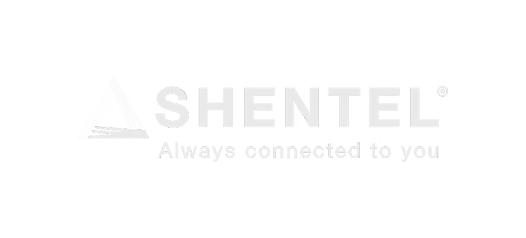FIRESIDE CHATS
Insights from leaders shaping the future of broadband
FEATURED
Modernizing Fielding Workflows for Broadband Deployment
Field data collection is one of the most time-consuming and error-prone parts of broadband deployment. From permitting delays to repeated site visits, small inefficiencies in fielding workflows create major bottlenecks across engineering, permitting, and construction.
In this conversation, D8Averse CTO Zach Raboin joins Render’s Rob Laudati to discuss how automation and connected data are transforming fielding from a manual, sequential process into a continuous flow of intelligence. They explore how better visibility, real-time data sharing, and integrated workflows are removing friction from permitting and construction, helping to deploy networks more efficiently, more accurately, and at lower cost.
In this chat, we unpack:
- Why the future of fielding depends on real-time, connected data rather than static capture methods
- How automation and transparency are reshaping the economics of permitting and construction readiness
- What it takes to create a digital feedback loop between field crews, engineers, and permitting authorities
- Why modernization in fielding workflows is foundational to scaling broadband efficiently and profitably
FIRESIDE CHATS
Insights from leaders shaping the future of broadband
Featuring speakers from:







.png)
.png)
%20(1)%20-%20Edited.png)







.png)
.png)
%20(1)%20-%20Edited.png)
Featuring speakers from:












The pressure to deliver broadband faster and with greater certainty has never been higher.
In this fireside chat series, leading operators, builders and tech partners share how they’re modernizing network delivery. From aligning field-to-office workflows to scaling with automation and AI, these conversations explore what it takes to improve efficiency, reduce risk, and deliver higher-quality networks, faster.

Standardizing the Design-Build Lifecycle
Design and construction have long operated as separate disciplines, but in an era of BEAD funding, labor constraints, and aggressive timelines, this disconnect creates risk and rework. In this conversation, Jon Owen, SVP of Telecom for North America at RMSI, shares how standardization, data quality, and cross-partner collaboration can accelerate deployment, strengthen sustainability, and ensure every network is built to last.
In this chat, we unpack:
- Why getting it right the first time starts with better data and front-end planning
- How design-build alignment and digital continuity reduce rework and cycle time
- The role of AI and field-captured intelligence in improving accuracy and automation
- How engineering firms, builders, and operators can better align incentives and governance
- Why sustainability should define success for the next decade of broadband deployment

AI Leadership and the Future of Network Deployment
As construction complexity increases and AI rapidly advances, industry leaders are rethinking how networks get built. In this conversation, Corey Klaasmeyer, CEO of Klaasmeyer Construction, shares how AI is transforming network deployment, from project planning and resource management to safety, training, and quality assurance. Corey discusses how moving from reactive to proactive systems is reshaping operations, what true AI adoption looks like in the field, and how wearables and automation are driving the next leap in workforce efficiency and safety.
In this chat, we unpack:
-
The shift from reactive to proactive infrastructure management with AI
-
How structured data enables real-time insight, forecasting, and issue prevention
-
Why successful field execution means meeting AI where it is and using it as a tool, not a threat
- How wearables and augmented reality can scale training, safety, and on-site accuracy
- Why AI-driven quality control and risk assessment will make rework a thing of the past
- Corey’s vision for the AI-enabled jobsite where technology becomes invisible yet indispensable

Building networks at scale with automation and AI
Operating across multiple states and municipalities, Blue Streak’s team faces the complexity of mass-scale deployments, tight timelines, and growing demand. In this conversation, Felix Virto, Director of Operations at Blue Streak, shares how technology is helping them streamline workflows, increase transparency, and create a more empowered workforce while improving quality and financial predictability.
In this chat, we unpack:
-
How Blue Streak engages stakeholders early to keep large-scale builds on track
-
How real-time data is improving quality, forecasting accuracy, and client relationships
-
Why better invoicing accuracy strengthens vendor partnerships and speeds payment cycles
-
The vision for a future where engineering, permitting, and construction operate as a seamless, 30-day “DevOps for construction” cycle

The future of work in fiber: empowering the workforce behind the network
Felix Virto, Director of Operations at
Blue Streak, shares how AI and automation are reshaping workforce models and unlocking smarter ways to scale fiber networks.
In this conversation, we explore how Blue Streak is using real-time data and automation to do more with less - while creating more strategic, leadership-driven roles across the organization.
In this chat, we unpack:
-
The impact of automation on field leadership, promotions, and employee satisfaction
-
Real-world examples of workforce transformation enabled by Render’s automation and visibility
-
What leaders need to know before rolling out construction tech across multi-generational teams

Automating as-builts at scale: The new standard for fiber delivery
Dexter Thompson
from 3-GIS discusses how construction as-builts, network inventory, and a true digital twin come together to improve network operations.
From easing field adoption to enabling real-time collaboration and predictive QA/QC, the conversation dives into how better data capture and integration create a more accurate, reliable, and scalable fiber network record.
In this chat, we unpack:
-
Why capturing and maintaining a complete, accurate digital twin is critical for network operations
-
How mobile tools, integration, and ease of use drive adoption in the field
-
Where AI, LiDAR, and predictive QA/QC can take data capture and network accuracy next
FEATURED

Rewiring the Model: How Utilities Are Accelerating Broadband Access
Jeff Reiman, President of The Broadband Group, discusses how utility-driven broadband models are changing the economics of fiber deployment and why better data and visibility are key to long-term success.
In this chat, we unpack:
-
How the utility lease model turns fiber from a cost center into a revenue-generating asset
-
Why public-private partnerships are unlocking access and economic opportunity
-
The critical role of data visibility, QA, and audit readiness in de-risking projects and attracting investment
Featuring speakers from:













Scaling Smart: Managing Multi-State Fiber Builds with Multiple GCs
Matt Estep, VP, Outside Plant Engineering & Construction at Shentel (GloFiber), explores the realities of managing multi-state fiber builds with multiple subcontractors and why consistency, communication, and a shared digital foundation are key to scaling smart.
In this chat, we unpack:
-
How Shentel is driving consistency across vendors, states, and municipalities
-
The role of digital tools in reducing friction and accelerating subcontractor adoption
-
Why ecosystem collaboration and API-driven workflows are the future of scalable broadband delivery

Why Modernizing Infrastructure Delivery Can’t Wait
Matt Myers, SVP, Fiber Engineering and Construction at HyperFiber, joins us to discuss why legacy processes can’t keep up with today’s scale of broadband delivery and what it takes to build fast without compromising quality.
In this chat, we unpack:
- How HyperFiber is using automation and consistent workflows to reduce rework
- Why aligning field and office teams is key to faster, cleaner construction
- What it takes to drive contractor adoption and deliver repeatable results at scale

Activations and Uptake Rate: Connecting Customers at Scale
Amir Heydarkhan, CTO and Co-founder at Camvio, joins us to explore how better and smarter workflows are reshaping service activations from construction to provisioning.
In this chat, we unpack:
- Why drops remain one of the most error-prone steps in broadband deployment
- How Camvio is using automation and real-time data to simplify provisioning
- The critical link between clean field data and a better customer experience

Building Broadband at Scale: Leadership, Labor, and the Next Generation of Delivery
Rob McGee, SVP, Telecom Operations at Quanta, joins us to talk risk, data, and the realities of fiber deployment at scale, where successful outcomes depend on visibility, coordination, and the people on the ground.
In this chat, we unpack:
-
Why disjointed programs and manual reporting continue to derail project outcomes
-
How field-level data capture is the key to accurate forecasting and fewer delays
-
The risks of bidding on optimism and why digital tools are now essential to stay competitive

Rewiring the Model: How Utilities Are Accelerating Broadband Access
Jeff Reiman, President of The Broadband Group, discusses how utility-driven broadband models are changing the economics of fiber deployment and why better data and visibility are key to long-term success.
In this chat, we unpack:
-
How the utility lease model turns fiber from a cost center into a revenue-generating asset
-
Why public-private partnerships are unlocking access and economic opportunity
-
The critical role of data visibility, QA, and audit readiness in de-risking projects and attracting investment
Operational clarity that powers business growth
Chat with our team to see how Render connects your entire ecosystem, drives field adoption with easy-to-use tools, and helps you scale a fiber business that’s more fundable, efficient, and predictable.
AI-first, field-ready workflows that accelerate delivery
Scalable automation that cuts costs and complexity
Real-time insights for faster, more confident decisions
Meet growing fiber demand with speed and certainty
Insights from the conversation
In the markets that we are in, we cannot just rely on Google or any public customer data. When it comes to Render, you add context to the drop, so we're working with high-quality data. That's how we keep improving the user experience and get it right the first time.
We use AI to select our markets. We use automation for the fielding of our poles. We adjust that data back into our engineering resources. We then field and ingest that back into Render, then we blueprint that for our contract partners… Once they use it, they're like, ‘Oh, well this really is saving time.’

One of the benefits that Render brings to the table is it’s transformed the way we manage builds. With a Render platform, you have visibility on how you can control risk. That risk doesn’t go away, but now it’s manageable. That, quite frankly, we hadn’t seen before, prior to the Render product.

The only way to avoid risk is through data. When crews log progress daily, at the field level, you get real-time visibility and reduce the chance of project delays, change orders, or worse, running out of funding mid-build. Without that, you're flying blind.

Once the crews saw that when they finished a job, 95% of the deliverables were already done, it clicked. What used to take hours of indexing and paperwork is now handled in real time and that’s a win for everyone.



%20(1).png?width=216&height=60&name=D8Averse%20logo%20(1)%20(1).png)
